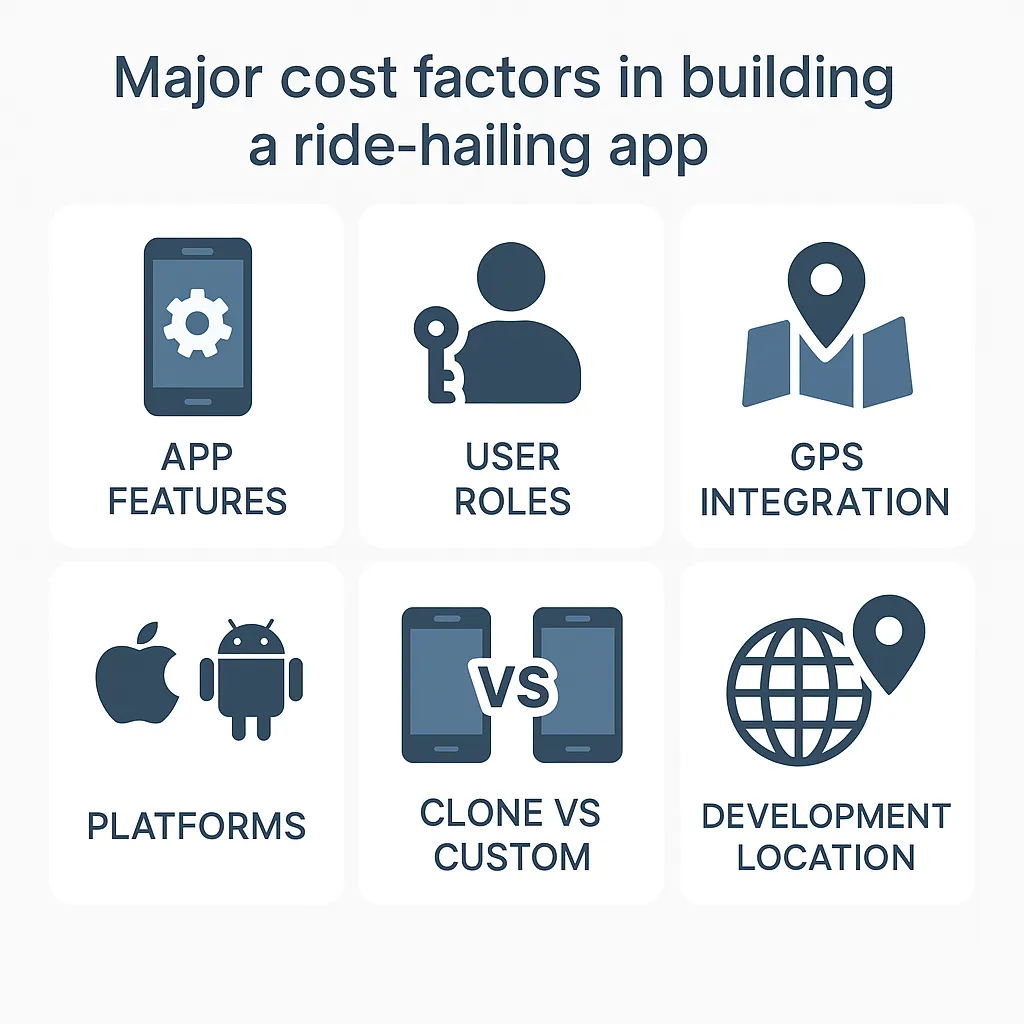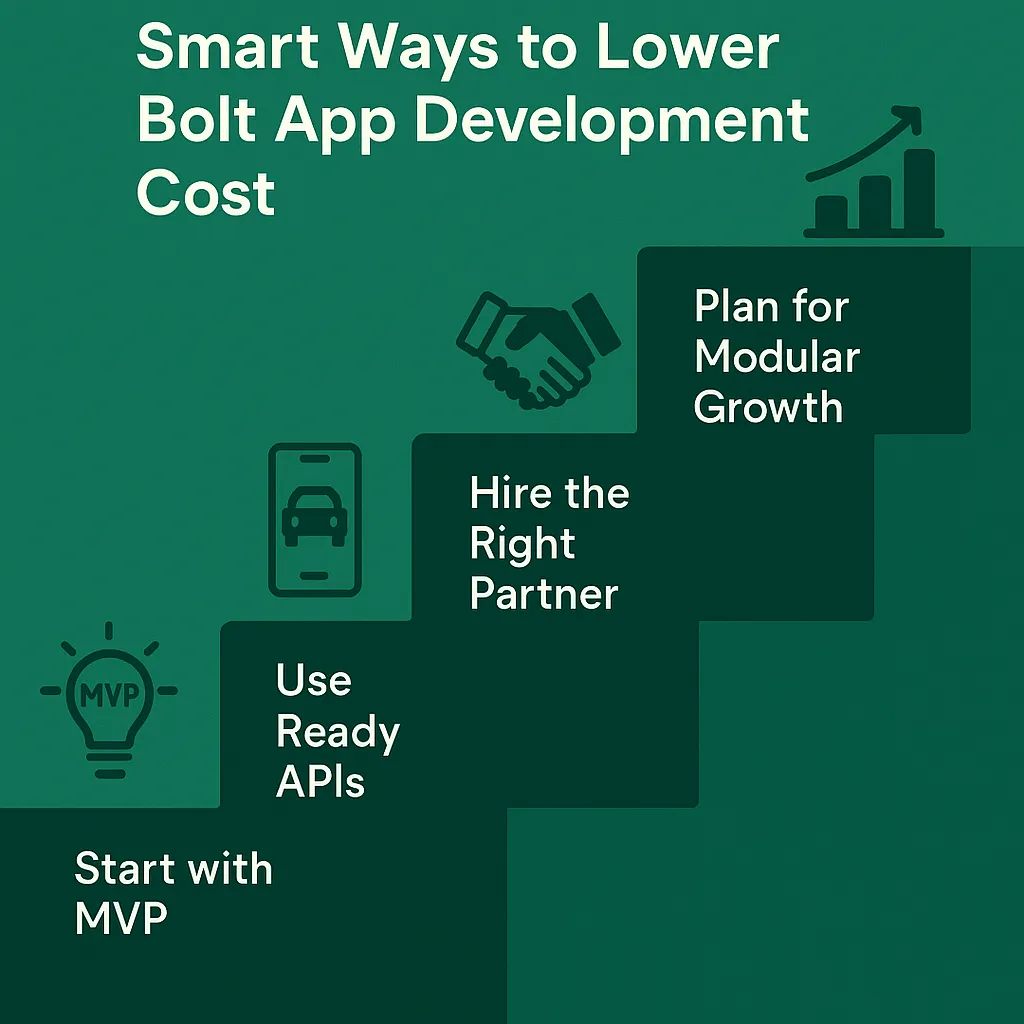Bolt App Development Cost in 2026 : Full Cost Guide
Create a powerful, customizable streaming solution with Miracuves’ Bolt, equipped with high-performance features and next-gen technology.
Want to build the next big ride-hailing app like Bolt? Before you start outlining features or designing user flows, it’s crucial to understand the real development cost.
Bolt is more than just a taxi booking app — it’s a fully integrated mobility platform offering ride-sharing, food delivery, micromobility, and driver management. Replicating this kind of ecosystem means thinking beyond the frontend — you’ll need strong backend infrastructure, real-time GPS, payments, and scalability baked into the core.
Whether you’re a mobility tech founder or an on-demand services entrepreneur, knowing the Bolt app development cost helps you prioritize features, plan for scale, and allocate your budget with confidence.
This guide walks you through all the key pricing factors — from location-based costs and complexity breakdowns to hidden expenses and money-saving tips — so you can move forward with clarity and control.

Key Factors That Influence Development Cost
There’s no flat rate for building a Bolt-style app. Your total cost depends on the size of your platform, the technologies you use, and how you go about development.
Here are the key drivers:
Core Features → Real-time ride matching, fare calculation, driver tracking, and payment integration are foundational but complex.
User Roles → You’re not just building for passengers — driver apps, admin dashboards, and dispatch systems add multiple layers.
Geo-location & Maps → GPS, route optimization, and live tracking require custom map APIs and high testing accuracy.
Platform Count → Supporting Android, iOS, and Web versions adds more dev time — and more QA effort.
Custom vs. Clone Model → Going with a white-label Bolt clone cuts time and budget, but limits deep customization.
Backend Scalability → Handling thousands of concurrent bookings means investing in a robust cloud setup from day one.
Development Team Location → Hiring in India or Eastern Europe can bring major cost advantages without quality trade-offs.
Bolt App Development Cost by App Complexity
To give you a clearer view, here’s how costs scale based on your feature depth and platform ambitions.
This range includes UI/UX design, backend development, QA testing, and basic support — but doesn’t include marketing, hosting, or third-party licenses.
|
App Type
|
Estimated Cost Range (USD)
|
Description
|
|---|---|---|
|
MVP (Minimum Viable Product)
|
$15,000 – $30,000
|
Core features only — rider & driver login, ride booking, fare estimation, basic map
|
|
Standard Version
|
$30,000 – $70,000
|
Includes scheduling, wallets, promo codes, admin dashboard, basic analytics
|
|
Full-Featured App
|
$70,000 – $150,000+
|
Advanced UX, real-time tracking, multi-city support, surge pricing, loyalty systems
|
Bolt-Style Delivery Platform Development Cost by Miracuves (2026 Pricing)
To give you a clearer view, here’s how costs scale based on your feature depth and platform requirements.
This range includes UI/UX design, backend development, QA testing, and post-launch support — but doesn’t include marketing, hosting, or third-party licenses.
|
App Type
|
Estimated Cost Range (USD)
|
Description
|
|---|---|---|
|
MVP (Minimum Viable Product)
|
$999 – $1,499
|
Core ride-hailing features only — rider and driver login, basic ride booking, GPS location, minimal UI, and simple map functionality.
|
|
Standard Version
|
$1,500 – $2,099
|
Includes scheduling, multi-modal ride options, wallets, promo codes, real-time tracking upgrades, an admin dashboard, and improved analytics.
|
|
Full-Featured App
|
$2,899 (Miracuves)
|
Advanced Bolt-style ride platform with multi-modal transport support, surge pricing, AI-enhanced route intelligence, advanced analytics, driver communication tools, and enterprise-grade scalability.
|
Average Cost Estimates by Region
Where your development team is based has a big influence on the final cost. Here’s a general comparison of average Bolt app development pricing by region:
|
Region
|
Hourly Rate (USD)
|
Typical Cost for Standard App
|
|---|---|---|
|
North America
|
$100 – $200/hr
|
$100,000 – $200,000+
|
|
Western Europe
|
$80 – $150/hr
|
$80,000 – $160,000+
|
|
Eastern Europe
|
$40 – $80/hr
|
$40,000 – $90,000+
|
|
India & Southeast Asia
|
$20 – $50/hr
|
$20,000 – $60,000+
|
Offshore development gives startups more room to experiment, iterate, and expand — without breaking their budget.
Cost Breakdown by Development Stage : Bolt Clone
Understanding how your budget is allocated across development phases helps you plan better, avoid hidden expenses, and maintain control over your cash flow. Here’s a typical cost distribution across the stages of building a Bolt clone app:
|
Development Stage
|
Estimated % of Total Cost
|
Includes
|
|---|---|---|
|
Discovery & Planning
|
5–10%
|
Market research, competitor analysis, defining user personas, feature scoping, technical requirements.
|
|
UI/UX Design
|
10–15%
|
Wireframing, prototyping, responsive design, visual branding, user experience mapping.
|
|
Frontend & Backend Dev
|
40–50%
|
Core feature development, database architecture, APIs, payment integrations, dashboard and logic build.
|
|
Testing & QA
|
10–15%
|
Manual and automated testing, bug fixing, device/browser compatibility checks, performance tuning.
|
|
Deployment & Launch
|
5–10%
|
App store submission (Android/iOS), server setup, production deployment, performance monitoring tools.
|
|
Maintenance & Updates
|
10–20%
|
Post-launch bug fixes, new features, server maintenance, user support, compliance updates.
|

How to Reduce Bolt App Development Costs (Without Compromising Quality)
Developing a Bolt-like app doesn’t have to be a capital-heavy process if you make smart technical decisions early on.
Here’s how to keep things lean:
Start with an MVP → Launch with core ride-booking features, gather market data, and scale in phases.
Use a clone solution → White-label Bolt clones help reduce both cost and time-to-market while giving you room to customize.
Partner with experts → Choose a development partner with mobility tech experience and a strong clone solution background.
Leverage third-party APIs → Use proven plug-and-play APIs for location, payments, and ride matching instead of building from scratch.
Think modular → Build a scalable backend that lets you plug in food delivery, e-bikes, or fleet management later — without redoing the entire system.
This phased approach lets you control budget while still building a competitive, feature-rich product.
Choose the Right Development Partner
Even with a solid plan, launching a Bolt-style app is a serious undertaking. Your development partner should do more than code — they should help you navigate platform scalability, data compliance, and performance challenges.
Here’s what to look for:
A strong portfolio in mobility and on-demand app development
Proven track record with white-label or clone platforms
A team that can manage design, backend, API integration, and post-launch support
Cost transparency, phased delivery, and performance monitoring
At Miracuves, we help founders move faster — with ready-made Bolt clone solutions built for security, performance, and scale. Whether you’re launching in one city or ten, we’ll help you deploy smarter and grow with confidence. Explore how to hire the best Bolt clone developer and get started on your mobility tech journey today.
Conclusion
The cost to develop a Bolt app in 2025 depends on your business goals, region, and feature roadmap. You could start with a $30,000 MVP or invest $250,000+ in a full-stack mobility platform. What matters most is knowing where to start and scaling smart.
Need a real-world estimate for your ride-hailing app?
Talk to Miracuves for a custom quote and launch roadmap.
Explore more clone solutions for mobility startups in our full app development series.
Frequently Asked Questions
Building a Bolt-style ride-hailing app typically costs $30,000 to $250,000+, depending on scope and customization.
With Miracuves’ ready-made Bolt Clone Solution, you can launch your complete platform in just 3-9 days for only $2,899, including setup, customization, and deployment.
Core features include GPS booking, fare calculation, driver assignment, user registration, and payment integration.
Yes. White-label Bolt clone apps cut down dev time and budget, offering a quicker path to market without starting from scratch.
A basic MVP usually takes 3–4 months, and a full-featured version may take 6–9 months when built from scratch.
With Miracuves’ ready-made Bolt Clone Solution, you can launch your complete ride-hailing platform in just 3–9 days, including setup, customization, and deployment.
Miracuves combines ride-hailing expertise with modular clone solutions, giving you a fast, scalable, and cost-effective way to launch your platform.



